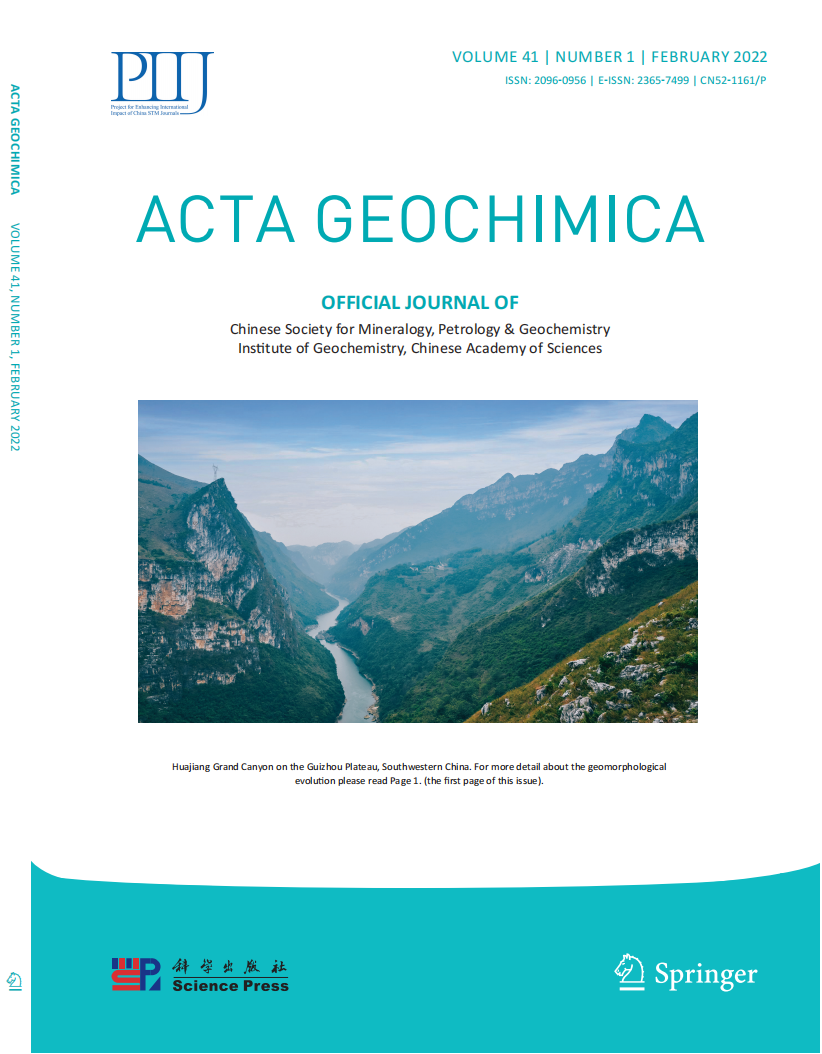- 钛学术文献服务平台 \
- 学术期刊 \
- 基础科学期刊 \
- 化学期刊 \
- 地球化学学报(英文)期刊 \
Spatial prediction of landslide susceptibility using GIS-based statistical and machine learning mode
Spatial prediction of landslide susceptibility using GIS-based statistical and machine learning mode
原文服务方:
地球化学学报(英文)
摘要:
Landslide susceptibility mapping is vital for landslide risk management and urban planning. In this study, we used three statistical models [frequency ratio, certainty factor and index of entropy (IOE)] and a machine learning model [random forest (RF)] for landslide susceptibility mapping in Wanzhou County, China. First, a landslide inventory map was prepared using earlier geotechnical investigation reports, aerial images, and field surveys. Then, the redundant factors were excluded from the initial fourteen landslide causal factors via factor correlation analysis. To determine the most effective causal factors, landslide susceptibility evaluations were performed based on four cases with different combinations of factors ("cases"). In the analysis, 465 (70%) landslide locations were randomly selected for model training, and 200 (30%) landslide locations were selected for verification. The results showed that case 3 produced the best performance for the statistical models and that case 2 produced the best performance for the RF model. Finally, the receiver operating characteristic (ROC) curve was used to verify the accuracy of each model's results for its respective optimal case. The ROC curve analysis showed that the machine learning model performed better than the other three models, and among the three statistical models, the IOE model with weight coefficients was superior.

推荐文章
Spatial analysis of carbon storage density of mid-subtropical forests using geostatistics: a case st
Carbon storage density
Geostatistics
Mid-subtropical forests
Spatial autocorrelation
Spatial heterogeneity
基于Oracle Spatial的GIS数据组织及查询
GIS数据
Oracle Spatial
对象-关系模型
四元树索引
查询
基于Oracle Spatial的GIS图层信息实时共享的实现方法
Oracle Spatial
GIS
图层信息
实时共享
MapX
Groundwater quality assessment using multivariate analysis, geostatistical modeling, and water quali
Groundwater
Multivariate analysis
Geostatistical modeling
Geochemical modeling
Mineralization
Ordinary Kriging
内容分析
关键词云
关键词热度
相关文献总数
(/次)
(/年)
文献信息
| 篇名 | Spatial prediction of landslide susceptibility using GIS-based statistical and machine learning mode | ||
| 来源期刊 | 地球化学学报(英文) | 学科 | |
| 关键词 | Landslide susceptibility mapping Statistical model Machine learning model Four cases | ||
| 年,卷(期) | 2019,(5) | 所属期刊栏目 | |
| 研究方向 | 页码范围 | 654-669 | |
| 页数 | 15页 | 分类号 | |
| 字数 | 语种 | 英文 | |
| DOI | 10.1007/s11631-019-00341-1 | ||
五维指标
版权信息
全文
- 全文.pdf
引文网络
引文网络
二级参考文献 (0)
共引文献 (0)
参考文献 (0)
节点文献
引证文献 (0)
同被引文献 (0)
二级引证文献 (0)
2022(0)
- 参考文献(0)
- 二级参考文献(0)
- 引证文献(0)
- 二级引证文献(0)
研究主题发展历程
节点文献
Landslide susceptibility mapping
Statistical model
Machine learning model
Four cases
研究起点
研究来源
研究分支
研究去脉
引文网络交叉学科
相关学者/机构
期刊影响力
地球化学学报(英文)
主办单位:
中国科学院地球化学研究所
出版周期:
双月刊
ISSN:
2096-0956
CN:
52-1161/P
开本:
大16开
出版地:
贵州省贵阳市观水路46号地球化学研究所
邮发代号:
创刊时间:
1982-01-03
语种:
英文
出版文献量(篇)
294
总下载数(次)
0
期刊文献
相关文献
推荐文献

 免费查重
免费查重










